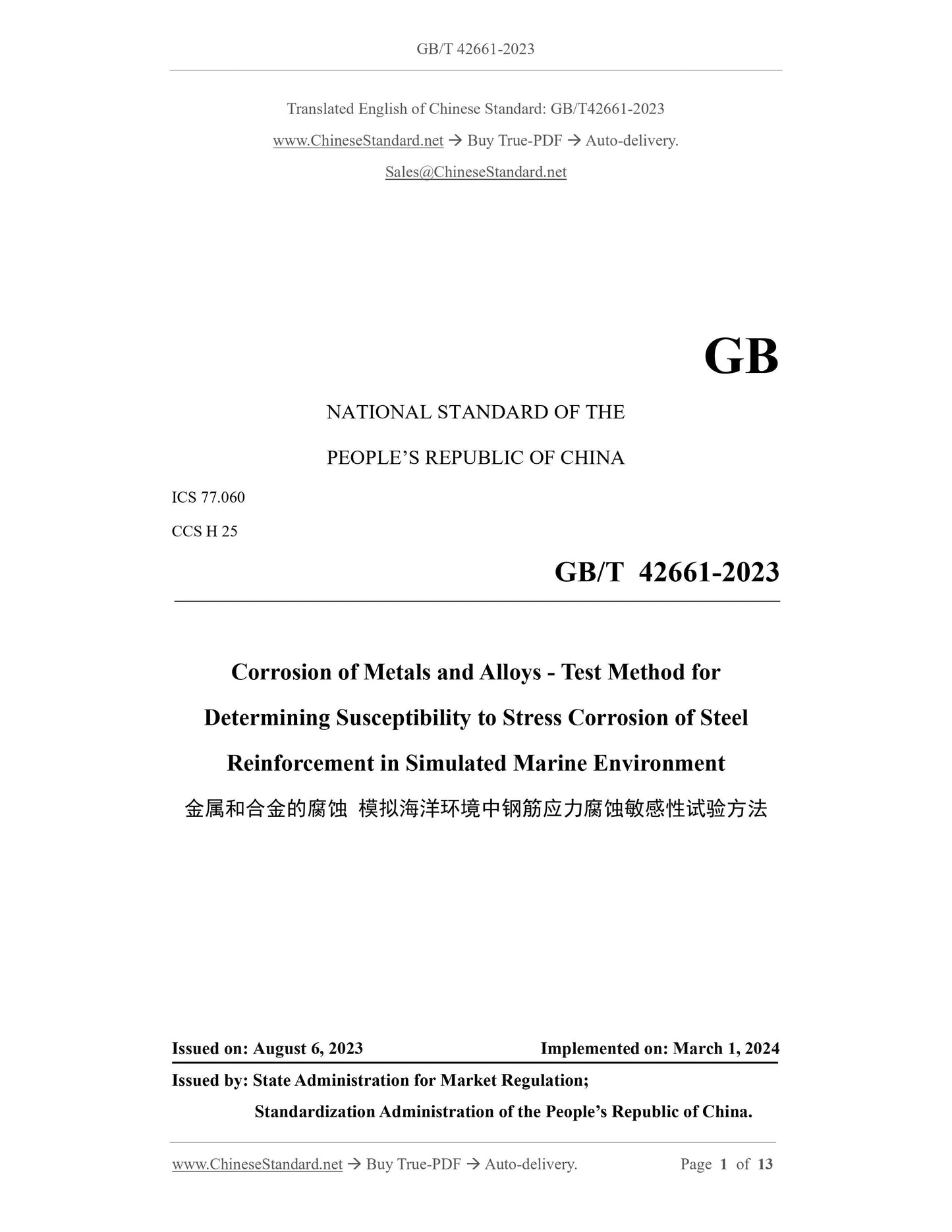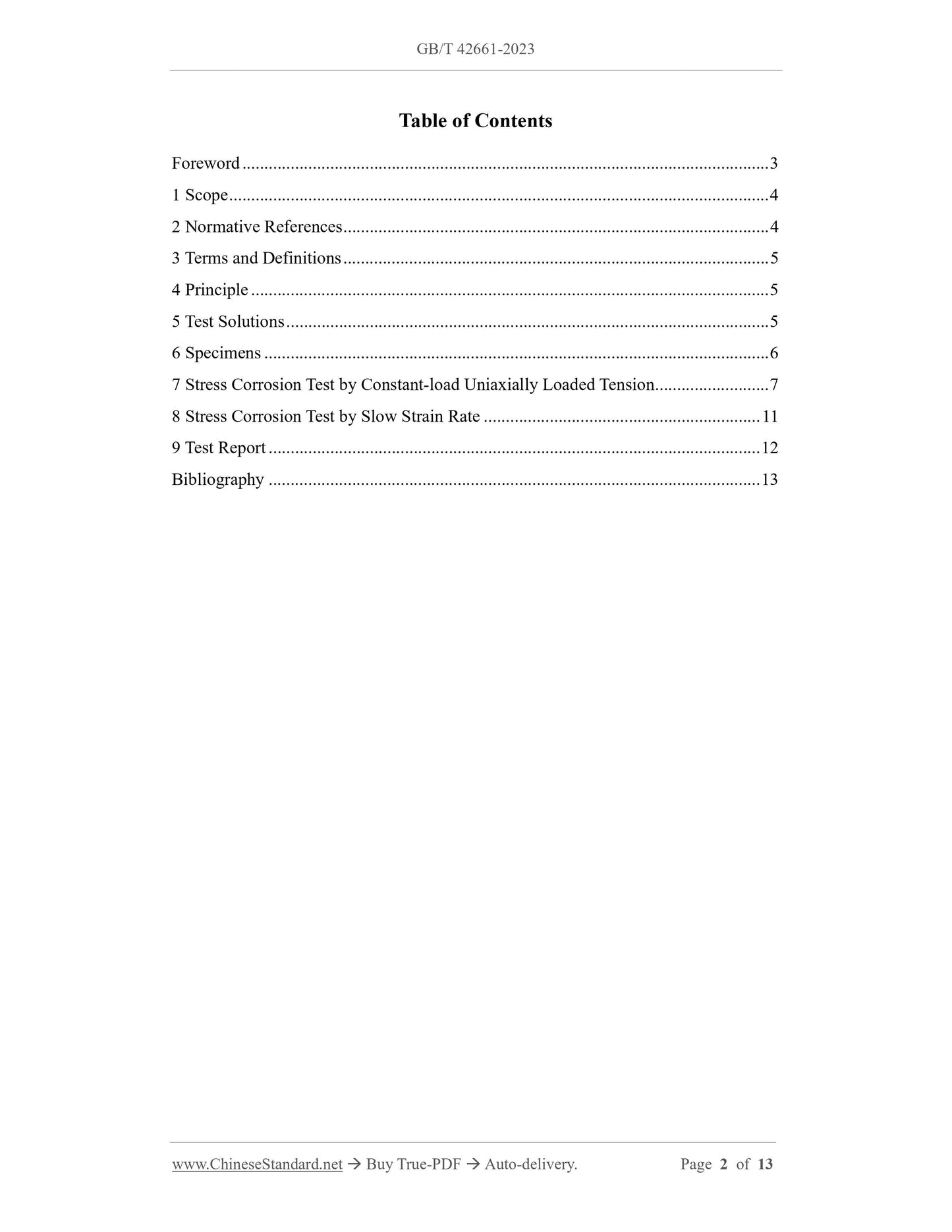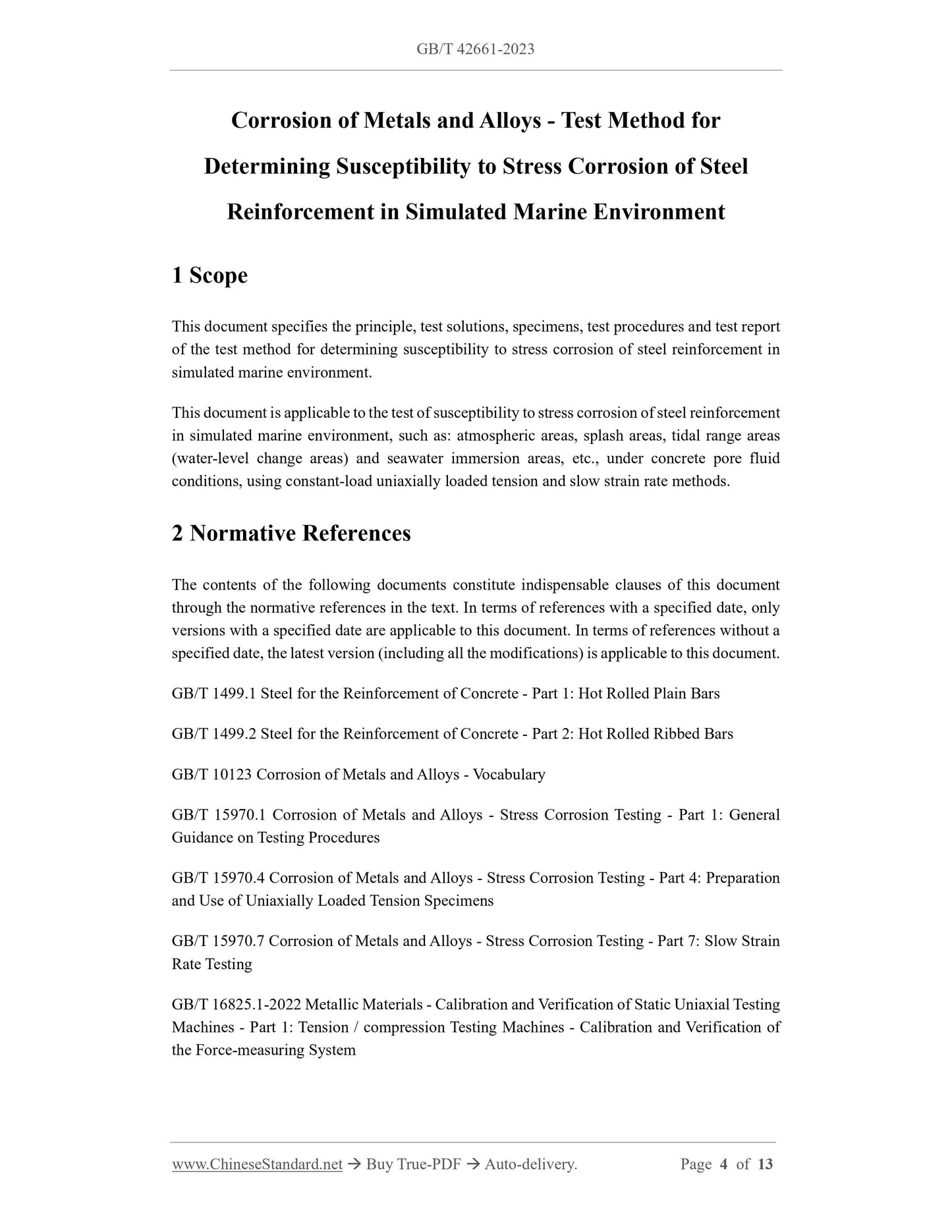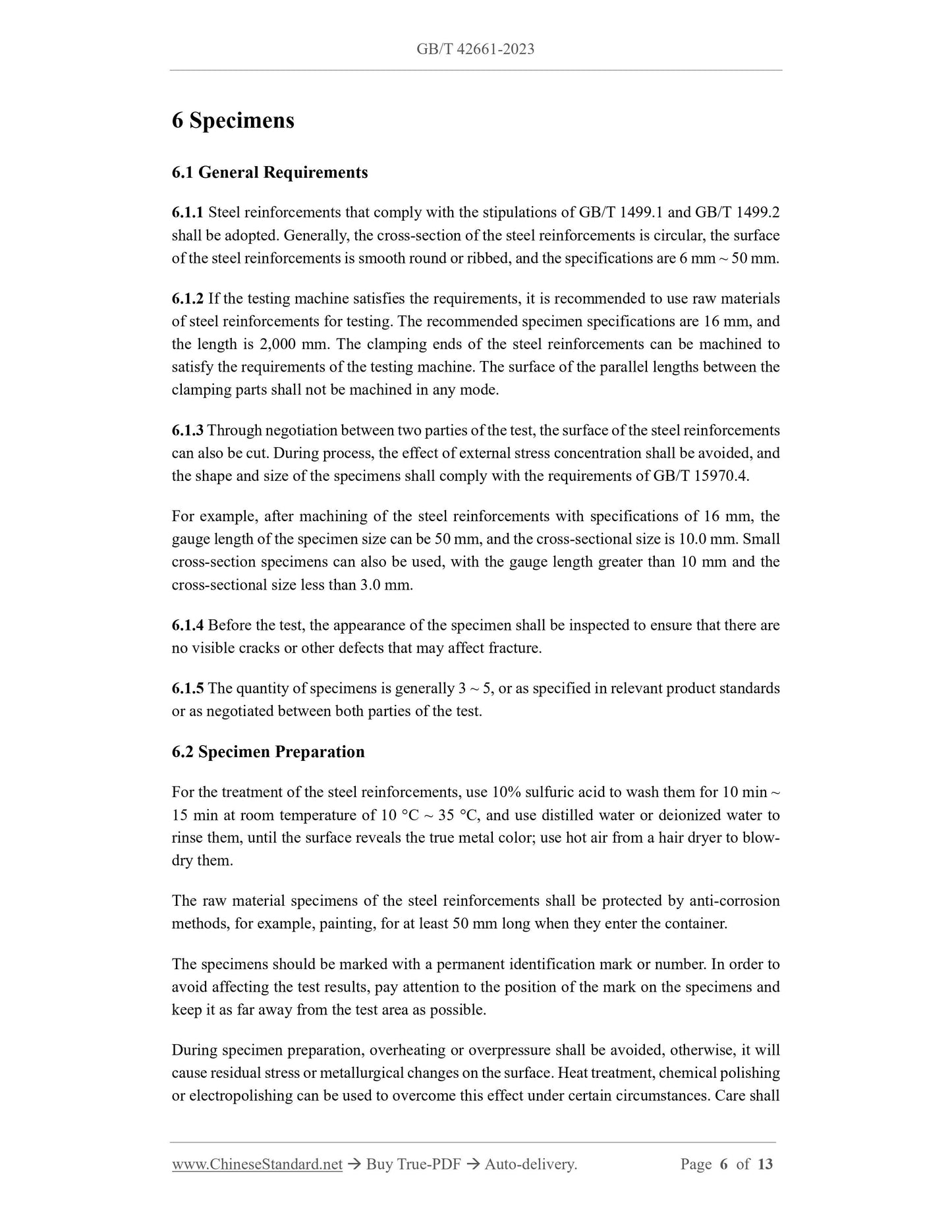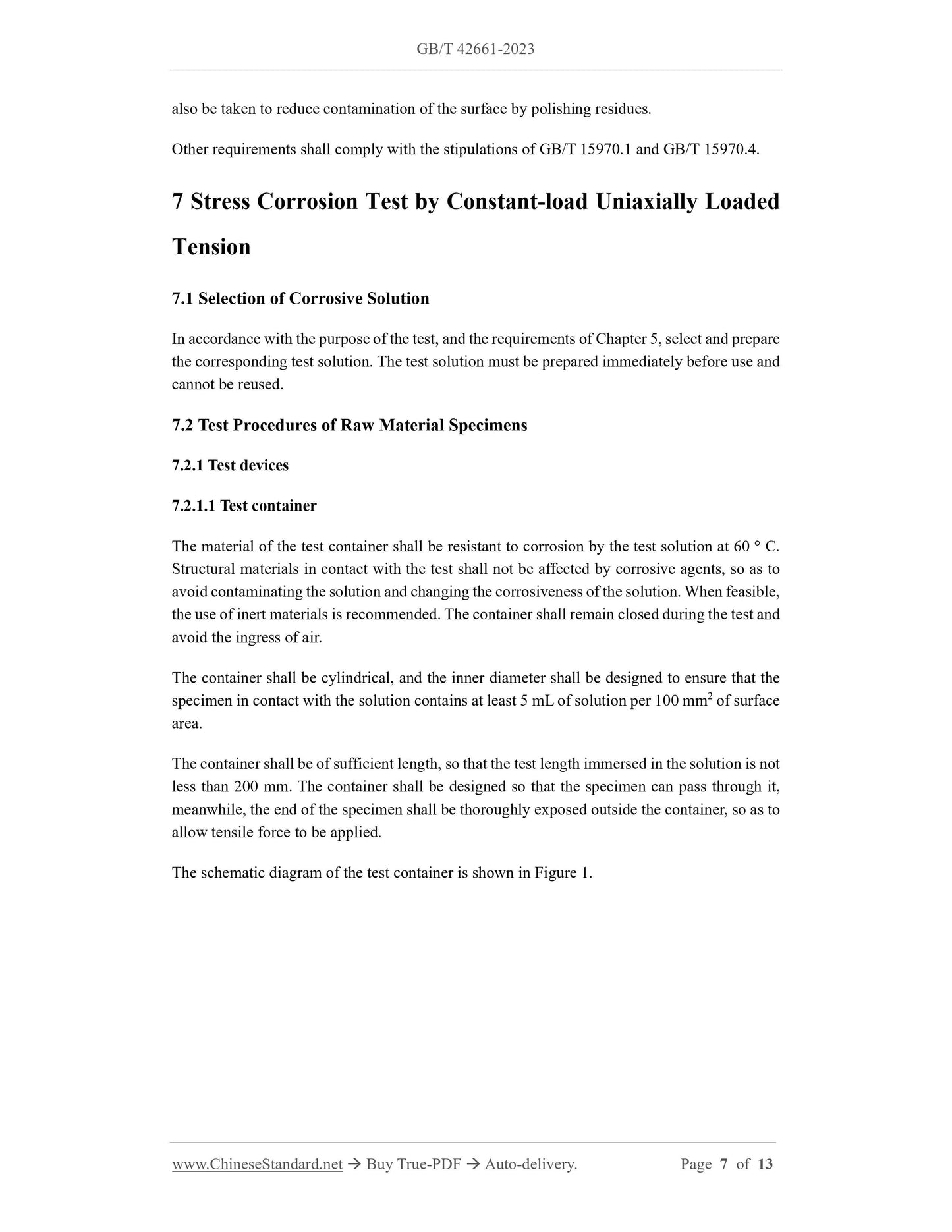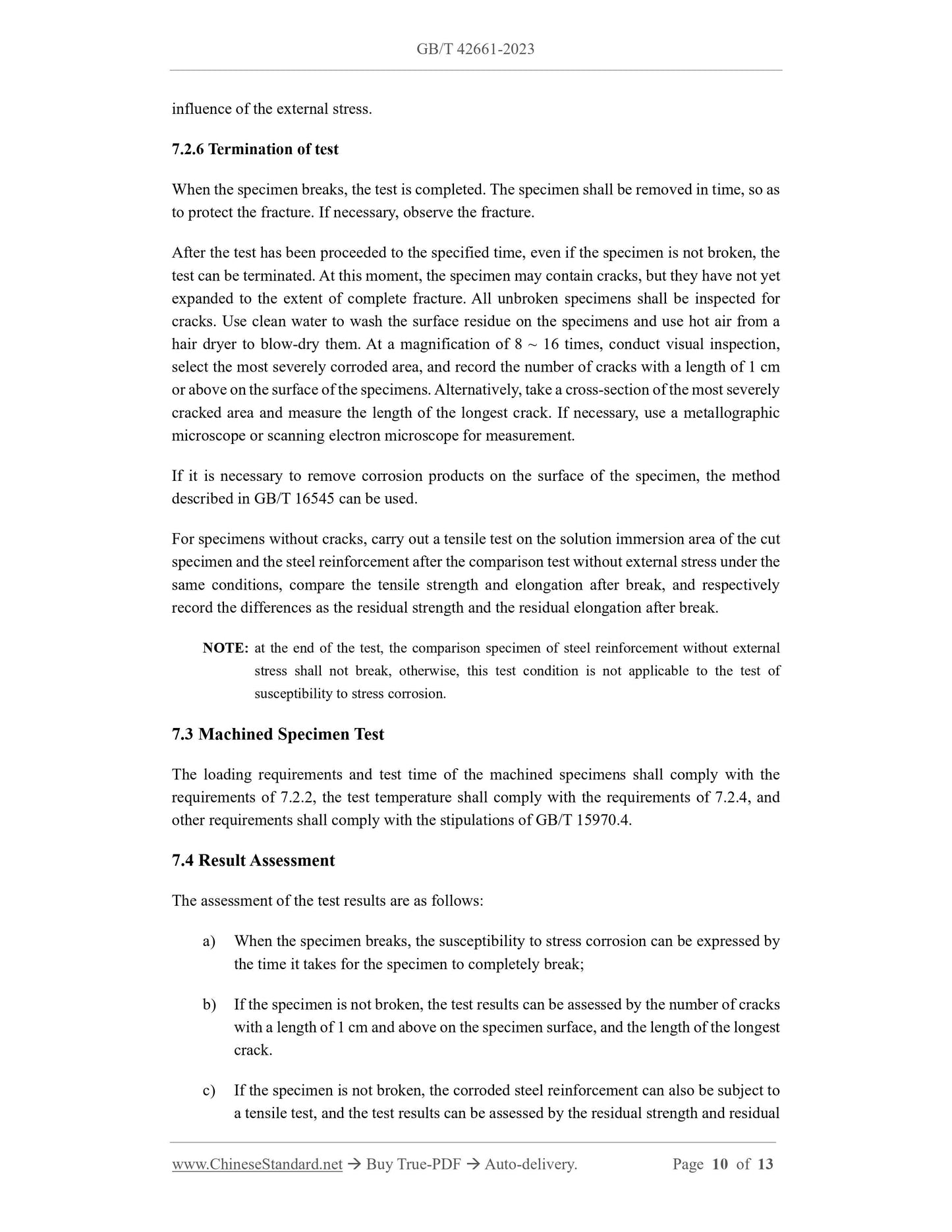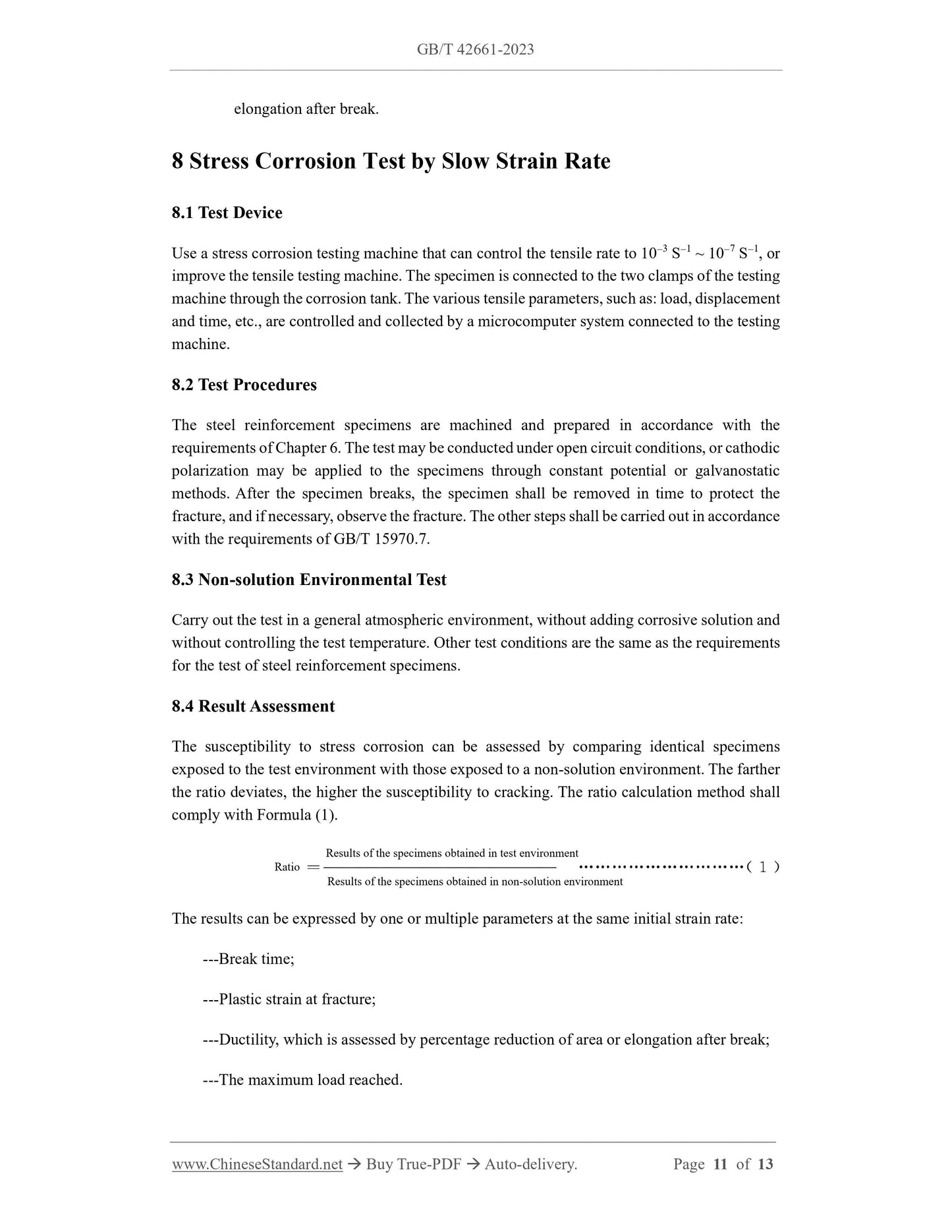1
/
of
7
www.ChineseStandard.us -- Field Test Asia Pte. Ltd.
GB/T 42661-2023 English PDF (GB/T42661-2023)
GB/T 42661-2023 English PDF (GB/T42661-2023)
Regular price
$170.00
Regular price
Sale price
$170.00
Unit price
/
per
Shipping calculated at checkout.
Couldn't load pickup availability
GB/T 42661-2023: Corrosion of metals and alloys - Test method for determining susceptibility to stress corrosion of steel reinforcement in simulated marine environment
Delivery: 9 seconds. Download (and Email) true-PDF + Invoice.Get Quotation: Click GB/T 42661-2023 (Self-service in 1-minute)
Newer / historical versions: GB/T 42661-2023
Preview True-PDF
Scope
This document specifies the principle, test solutions, specimens, test procedures and test reportof the test method for determining susceptibility to stress corrosion of steel reinforcement in
simulated marine environment.
This document is applicable to the test of susceptibility to stress corrosion of steel reinforcement
in simulated marine environment, such as: atmospheric areas, splash areas, tidal range areas
(water-level change areas) and seawater immersion areas, etc., under concrete pore fluid
conditions, using constant-load uniaxially loaded tension and slow strain rate methods.
Basic Data
| Standard ID | GB/T 42661-2023 (GB/T42661-2023) |
| Description (Translated English) | Corrosion of metals and alloys - Test method for determining susceptibility to stress corrosion of steel reinforcement in simulated marine environment |
| Sector / Industry | National Standard (Recommended) |
| Classification of Chinese Standard | H25 |
| Classification of International Standard | 77.060 |
| Word Count Estimation | 10,138 |
| Date of Issue | 2023-08-06 |
| Date of Implementation | 2024-03-01 |
| Issuing agency(ies) | State Administration for Market Regulation, China National Standardization Administration |
Share
